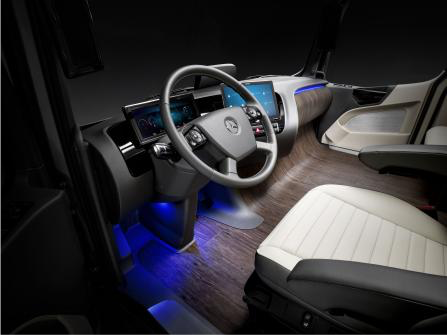Trucks engineered with various levels of self-driving capabilities are expected to pull onto North American roads over the next decade; and autonomous could be seen in the real world not to long after 2025, according to Frost & Sullivan.
As reported by Fleet Owner, F&S’s global director Sandeep Kar offered a “forward-looking perspective on how this brave new world of trucking may play out down the road.”
He contends such technologies will work in concert to cut fuel consumption, reduce emissions and ensure better highway safety. “Trucks that will host these technologies in 2020 and beyond will be more fuel-efficient compared to trucks today and will feature even higher levels of distributed electronics,” he told Fleet Owner.
“Automated vehicle technologies can enhance fuel efficiency by communicating with disparate vehicle systems and sub-systems in trucks featuring electronic interfaces. Moreover, OEMs will design and use these technologies to catalyze highest fuel efficiency so as to influence the purchase decision of truck buyers.”
Kar noted that wireless platooning is “a form of autonomous driving that has shown meaningful fuel cost savings with very little incremental increase to a truck’s price. That can be leveraged by long-haul fleets to derive significant cost savings. This is one of the autonomous driving technologies/concepts that if applied properly can deliver interesting fuel economy gains.”
According to Kar, self-driving trucks will improve the performance of individual truck drivers “particularly if drivers can extract the promised benefits of this technology effectively and efficiently– which includes higher fuel efficiency, higher safety, less driver fatigue, etc.
“Nowadays,” he pointed out, “more and more fleets are incentivizing drivers for safe driving, and this technology can help drivers with safe driving, regulation compliance and fatigue reduction.”
While Kar conceded that “the jury is still out” on the technology’s potential to improve highway safety, he said that “our initial research indicates that highway safety may actually increase overall since most accidents can be attributed to human error.
“However, this will be a long-term phenomenon,” he continued, “since it will take at least a decade or more from 2025 onwards to have a sizeable population of such vehicles on the road to make a meaningful impact on highway safety.”
Kar also advised that self-driving technology “would also enable drivers and vehicles to communicate more effectively with shippers, receivers, fleet hub, and service and maintenance infrastructure. That would improve overall mobile-resource productivity.



Recent Comments